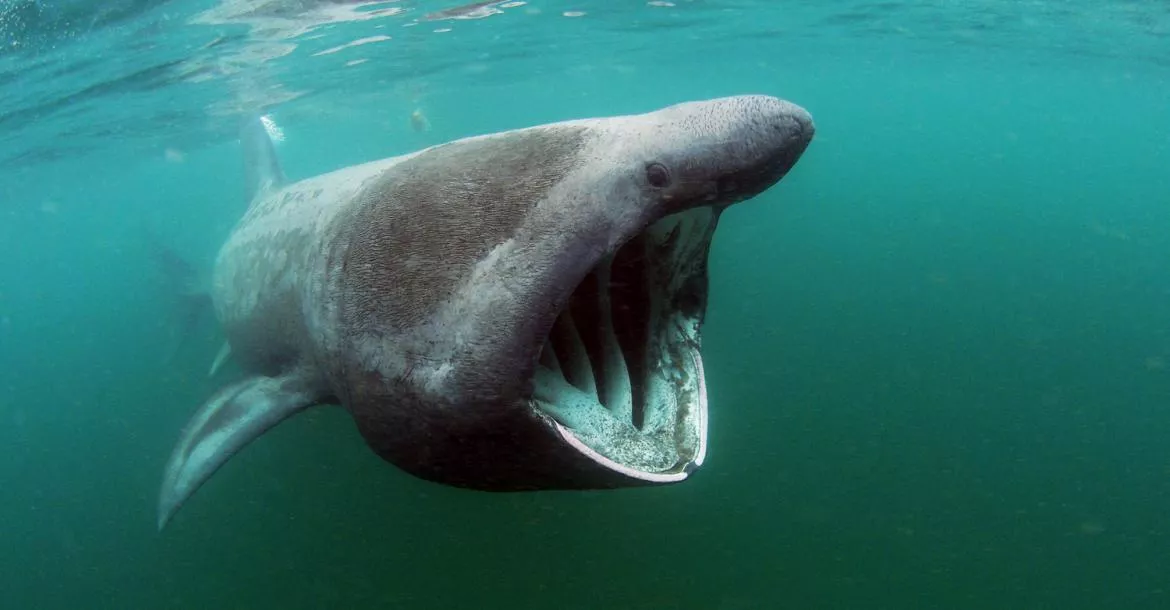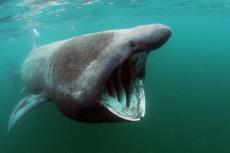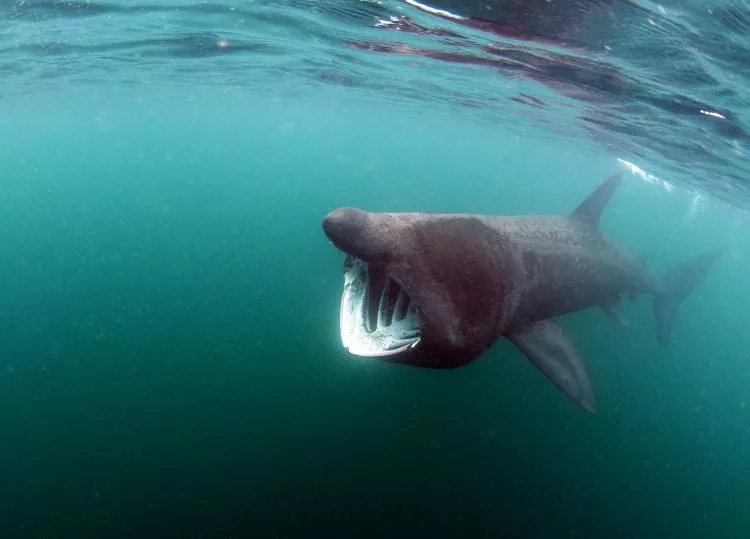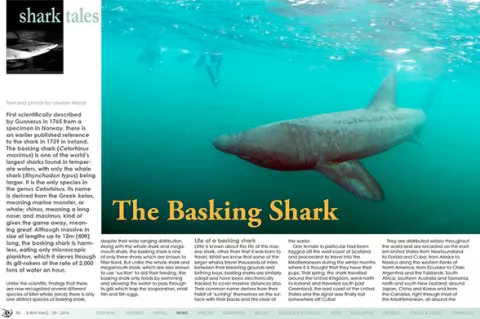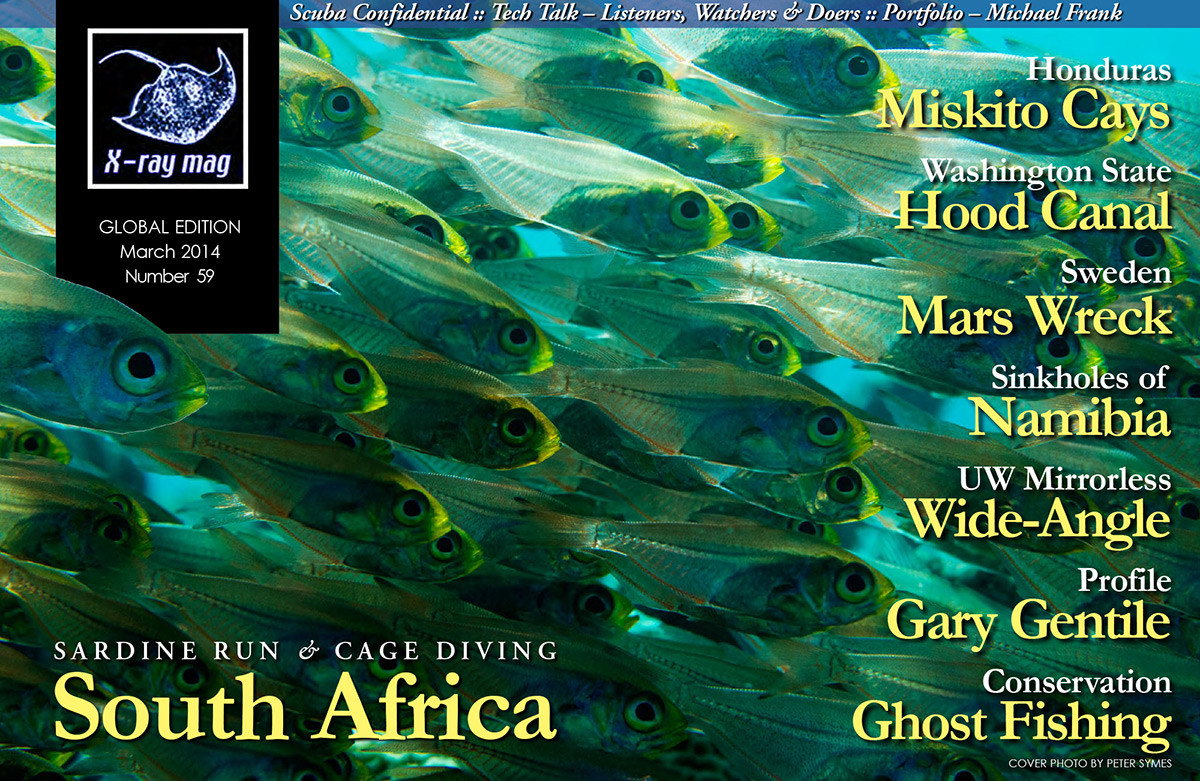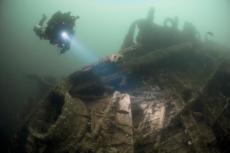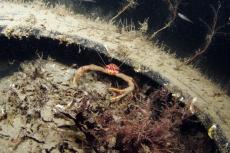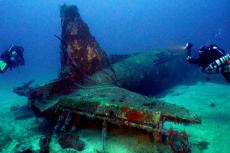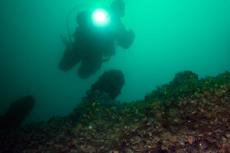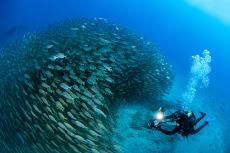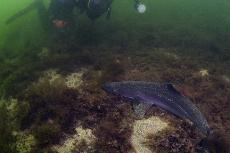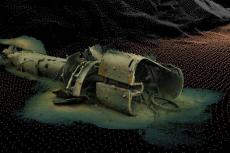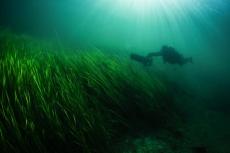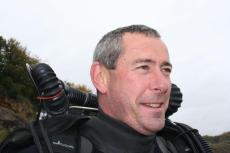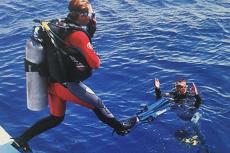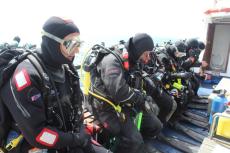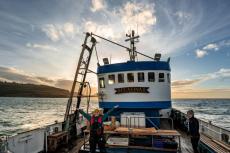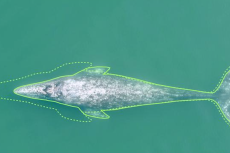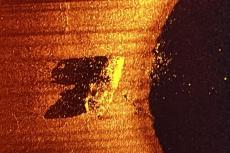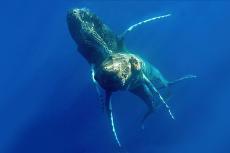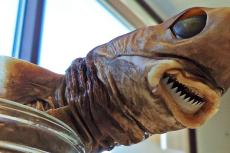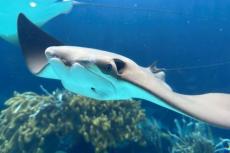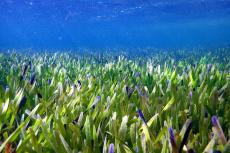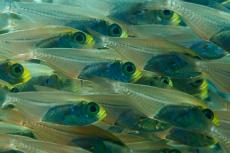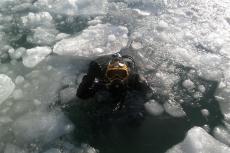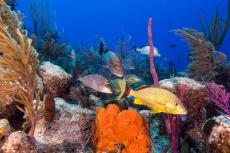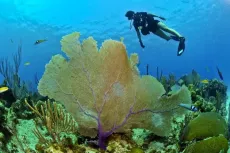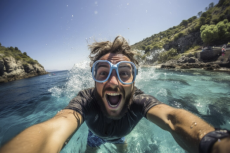First scientifically described by Gunnerus in 1765 from a specimen in Norway, there is an earlier published reference to the shark in 1739 in Ireland.
Contributed by
Unlike the scientific findings that there are now recognized several different species of killer whale (orca) there is only one distinct species of basking shark, despite their wide ranging distribution. Along with the whale shark and megamouth shark, the basking shark is one of only three sharks which are known to filter-feed. But unlike the whale shark and megamouth shark, which are also known to use ‘suction’ to aid their feeding, the basking shark only feeds by swimming and allowing the water to pass through its gills which trap the zooplankton, small fish and fish eggs.
Life of a basking shark
Little is known about the life of this massive shark, other than that it was born to travel. Whilst we know that some of the larger whales travel thousands of miles between their breeding grounds and birthing bays, basking sharks are similarly adept and have been electronically tracked to cover massive distances also. Their common name derives from their habit of ‘sunning’ themselves on the surface with their backs and fins clear of the water.
One female in particular had been tagged off the west coast of Scotland and proceeded to travel into the Mediterranean during the winter months where it is thought that they have their pups. That spring, the shark travelled around the United Kingdom, went north to Iceland and travelled south past Greenland, the east coast of the United States and the signal was finally lost somewhere off Cuba!
They are distributed widely throughout the world and are recorded on the eastern United States from Newfoundland to Florida and Cuba; from Alaska to Mexico along the western flanks of North America; from Ecuador to Chile; Argentina and the Falklands; South Africa; Southern Australia and Tasmania; north and south New Zealand; around Japan, China and Korea and from the Canaries, right through most of the Mediterranean, all around the United Kingdom and Ireland, around Scandinavia to the White Sea and onwards to Iceland and Greenland.
Travelling at around two to three knots, they feed at the surface, or just below, and are usually spotted by the tell-tail signs of their pointed snout out of the water as well as their large triangular dorsal fin and tail fin, making three distinct surface contacts all at the same time. They are also known to feed in the various zooplankton levels found off the continental shelf and are thought to migrate between deep water and the surface to take advantage of various migrating plankton populations.
Hotspots
Scottish Natural Heritage have discovered that there are a few ‘hot-spots’ on the west coast of Scotland with shoals of over 50-100 basking sharks in each group including the Isle of Coll and an offshore group of rocky mounts called Hyskeir found near the Isle of Canna. Further research has discovered that there is a deep trench that runs between the Outer Hebrides and mainland west Scotland, and this undersea highway is being used by all manner of marine mammals, too, such as sperm whales. A recent electronic triggering survey has indicated that over 900 basking sharks tripped the trigger as they moved north past Hyskeir.
These figures are quite phenomenal, and it is now reckoned that there are more basking sharks found in Scottish waters than any other place on the planet. It is also widely understood that if we look back at historical records of where the sharks used to be hunted for their livers, these should also indicate other hotspots, such as Cornwall, the Isle of Man and Ballyshannon in Ireland.
Hunted
Once hunted extensively for the oil from their livers, the most famous fishery was at Achill, County Mayo when the fishery caught over 9,000 individuals between 1950 and 1964. Unfortunately, the last targeted fishing for these sharks was done by the Norwegians in 2006, but they had been catching around 4,000 sharks each year prior to this. When prices dropped worldwide for the liver oil, the fishermen more than made up the loss by selling the fins with prices at around US$1000 to $2400 per fish caught. You can see why their plight is of international importance.
Thankfully there is now no active fishery in European, American or Australasian waters, although Norwegians are still allowed to land them as bycatch. New Zealand still allows finning and basking sharks are sometimes caught as bycatch over the hoki spawning grounds. These fins are sold under licence.
Absent from British waters from November through to March or April (depending on the water temperature and subsequent zooplankton bloom), it was widely thought that they all migrate beyond the continental shelf, however on a deep dive off Fort William in Loch Linnhe on the west coast of Scotland, my dive buddy and I received one of those life defining frights when we came face to face with a simply massive basking shark, which seemed to be resting at a depth of 42m (140ft)—until we startled it...
Reproduction
Limited information is available on their reproduction, but one caught female shark was reported to have given birth to around five live young all around 1.8m (6ft) long. This would indicate that the sharks are ovoviperous with a gestation period of around three years. The young hatch from the eggs inside the female and their long pointed snouts are thought to be an adaptation to help them feed whilst still in the womb. It is also estimated that males will be around 12-16 years of age before they reach sexual maturity and females at around 18 years old. What looks like mating behaviour has been observed with several individuals swimming nose to tail, actually touching each other and seemingly appearing to be so much ‘in the zone’ that they are completely oblivious to their surrounds. Like many sharks, copulation wounds are quite obvious during our summer months, indicating that this is the prime time for reproduction with warm waters, an abundance of food and hundreds of sharks all living and eating together.
Off the Isle of Coll, I personally witnessed at least one basking shark breaching similar to a whale, as there were five breachings all in quick succession. Is this part of the same sexual frenzy, was it just jumping for joy; was something much larger and more sinister after it, or was it clearing itself of parasites? It is quite clear that we still have an awful lot to learn about this wonderful shark.
Tourism
Since I live in Scotland, I have personally witnessed basking sharks in a number of locations on the west coast as well as the east coast where I live. I am also very aware of the increase in ‘eco-tourism’ interest in the basking sharks, and when a friend, Shane Wasik, founded Basking Shark Scotland, it seemed only natural for me to tag along and see what all the fuss was about.
During the last week of August, Shane managed to squeeze me onto his last trip of the season to try and photograph the basking sharks that congregate off the Island of Coll each summer season. Sightings had been rather sporadic and very few individuals had been seen from Cornwall all the way up the west coast of Scotland due to the water temperature being much colder than normal, earlier in the year, hence the annual plankton bloom was also delayed.
Thankfully for me and the others on the boat, this late plankton bloom had brought an abundance of sharks. On a quick check of the area, Shane had counted around 60 basking sharks all feeding on the surface within a small area of about a mile of coastline off the south of the Island of Coll.
For the first time, I now had a true appreciation of the behaviour of the animal whilst it is feeding. The ‘Money Shot’ is the open mouth feeding on plankton view. My observations showed that their forward facing eyes were placed very close to the end of their long pointy noses, which gives them more spatial vision to avoid anything big in front of them—namely an old clumsy fart of a diver like me, snorkeling in my drysuit!
The sharks would also avoid the large lions’ mane jellyfish where they were abundant, and if they accidentally swallowed one, they would sort of hiccup to spit the jellyfish back out. Clearly they were interested in only microscopic plankton.
The boat’s captain maneuvered us somewhere in the path of where we thought that the sharks would pass, to allow for as minimal contact as possible. Shane told us to enter the water quietly with as little splash as possible to avoid scaring the sharks away from their intended trajectory.
Once in the water, it took a while to understand some of the behaviour and to hopefully allow the sharks to get used to you. The more you swim after the shark, the more it is aware of you, and the more it will turn away from you, necessitating you to swim faster and turn tighter circles with the shark until you are absolutely pooped!
Stopping to catch my breath, taking stock of what was happening and getting more air into my old tired lungs, I heard Shane shouting at me (AGAIN!) “It’s behind you!” This became a bit of a standing/swimming joke between us and the, “He’s behind you—Oh no, it’s not!” rang loud off Coll.
Close observation showed that the sharks would turn circles anyway, when there were large concentrations of plankton, so by waiting quietly and conserving my strength, I could gauge which direction the shark was moving and try and head it off at the pass (but remember that the open mouth and nose are about five metres in front of the pointed dorsal fin).
Gradually the shark’s awareness includes you in its forward vision, and by waiting (whilst swimming), the shark will come closer and will avoid you, just like it avoids the lion's mane jellyfish. Damn it, but I didn’t. I got stung around my wrists and hands. Wear protection!
With my ‘money shot’ in the bag, plus some very nice moving images, I am so definitely coming back next year where (believe it or not) there are more basking sharks in Scottish waters than any other place on the planet!
Photo notes
My camera for this trip was the top end micro four thirds camera (Olympus OMD EM5) in a Nauticam housing supplied by Alex Tattersall. The main beauty of this rig is that it is small—about half the size and weight of a conventional DSLR camera and housing, therefore easier to lug around with less drag. In addition, it is able to take numerous photographs on its motor drive, but at the press of one button, it will immediately switch to movie mode.
My first encounters with the sharks taught me so much about what to do the next time, but the encounters are really exhausting, as these grand beasts are swimming constantly and not hanging back waiting for you to catch up with them.
After several attempts, perseverance, empathy and understanding, plus a lot of luck, I was able to fulfill a lifelong dream and photograph one of the largest fish in the sea and in Scottish waters!
Since 1998, the basking shark is fully protected under Appendix II of CITES (Convention on International Trade in Endangered Species of flora and fauna). Sadly, it is still hunted in Asian waters for their fins.
For more information, visit: www.baskingsharkscotland.co.uk ■
Published in
- Log in to post comments

